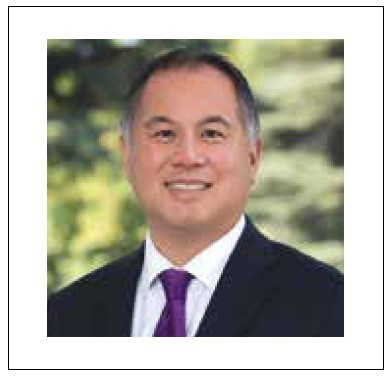
By Assemblymember Phil Ting–
It’s remarkable how the Affordable Care Act (ACA) has made strides in reducing the number of uninsured Californians. In fact, our uninsured rate has reached an all-time record low. We went from 17.2 percent in 2013 to 6.4 percent last year, the largest percentage drop for any state in the country. Over the years, nearly six million Californians have gotten their health insurance through the state’s insurance marketplace, Covered California, which was made possible by the ACA.
There are, however, still 1.3 million uninsured in our state with roughly ten percent from the LGBTQ+ community. If you need coverage, open enrollment is currently underway through January 25, 2025. Simply visit the Covered CA website ( https://www.coveredca.com/ ) to find a plan that’s right for you. Financial assistance is also available to help lower premiums. Covered California especially helps those who cannot get health insurance through work, but have incomes too high to qualify for Medi-Cal.
The good news is the Governor and state Legislature increased subsidies to $165 million next year, providing record-breaking financial support to help lower costs. As a result, all Californians with incomes above 200 percent of the federal poverty level (which is $30,120 for a single person and $62,400 for a family of four) are now eligible to enroll in a higher-tiered plan, called Enhanced Silver 73, with no deductibles and reduced out-of-pocket costs. Those under 200 percent of the federal poverty level will continue to have access to higher levels of benefits.
In addition, a recent federal rule change began this month, making about 40,000 recipients of DACA (Deferred Action for Childhood Arrivals) eligible to sign up for a health plan through Covered California. Eligible DACA recipients can receive financial help ( https://bit.ly/3YzUcQX ) if they qualify. Applicants must select the “gained lawful presence” option from the list in the special-enrollment period section when applying. The deadline for this group is December 31, 2024.
But the exciting progress we’ve made in insuring more Californians is at risk. The 2021 expansion of federal premium tax credits drove these gains, and they’ll expire after 2025. If that happens, some of the predicted impacts include:
• Coverage gains among communities of color will be reversed. Communities of color have experienced some of the largest increases in enrollment. Without enhanced premium tax credits, premium costs will increase by 76% for Latinos, 71% for Asians, and 67% for Black/African Americans.
• Almost all self-employed Californians will pay more. More than 1 in 4 Californians are self-employed, with the vast majority making less than about $58,000 per year. 90% of those who are self-employed will see an increase in premium costs if enhanced premium tax credits expire. Middle-income members would see premiums increase by 77%, paying up to 17% of their annual income on health insurance.
• Older enrollees will see major premium cost increases. Nearly half a million older Californians (ages 55 to 64) are enrolled in Covered California. Those earning under approximately $58,000 per year will see their monthly premium costs increase by 46%, or about $227 per month. Older middle-income enrollees making more than $58,000 will lose all financial assistance and need to pay nearly 25% of their income for health insurance.
To keep access to healthcare coverage affordable, we must begin lobbying our federal representatives. I hope you see the value of this program and begin writing or calling members of Congress next year to let them know financial help must continue. Nearly 90 percent of Covered California enrollees receive this assistance. Without it, people will drop their coverage and the impacts to individuals and our healthcare system would be devastating. A thriving health insurance market only works when everyone is in it.
Phil Ting represents the 19th Assembly District, which includes the west side of San Francisco along with the communities of Broadmoor, Colma, and Daly City, as well as part of South San Francisco and San Bruno.
Assemblymember Phil Ting
Published on November 7, 2024
Recent Comments